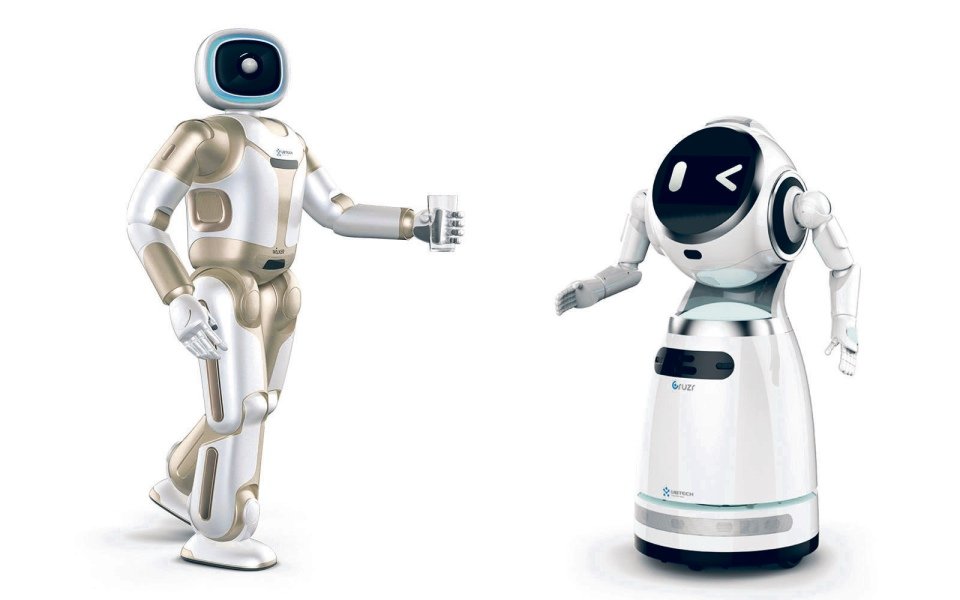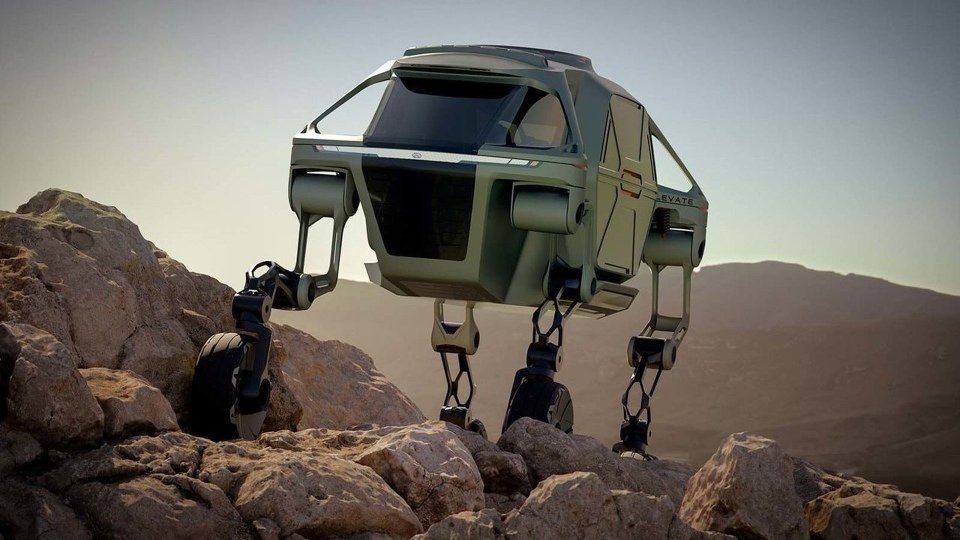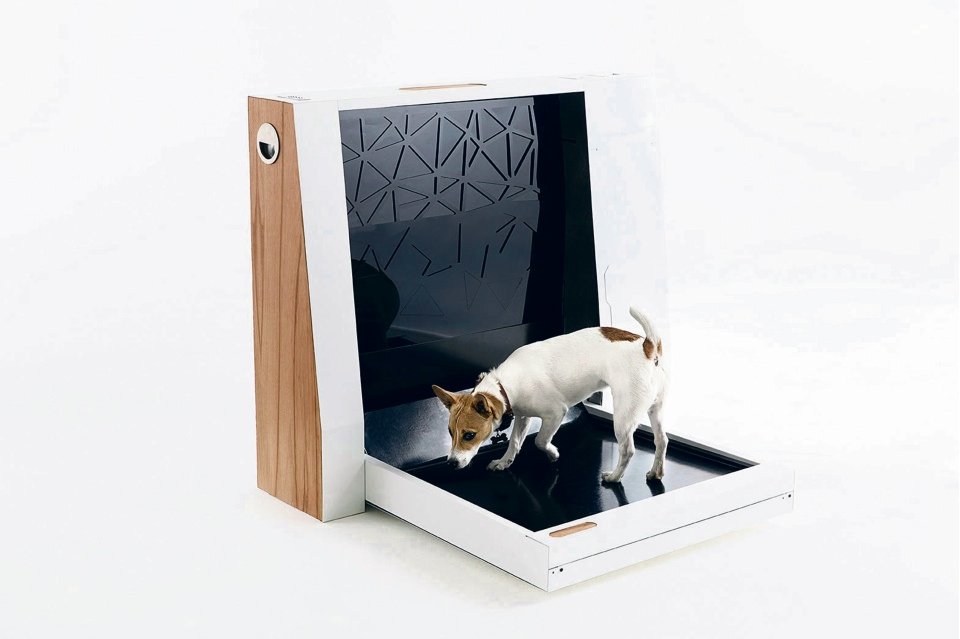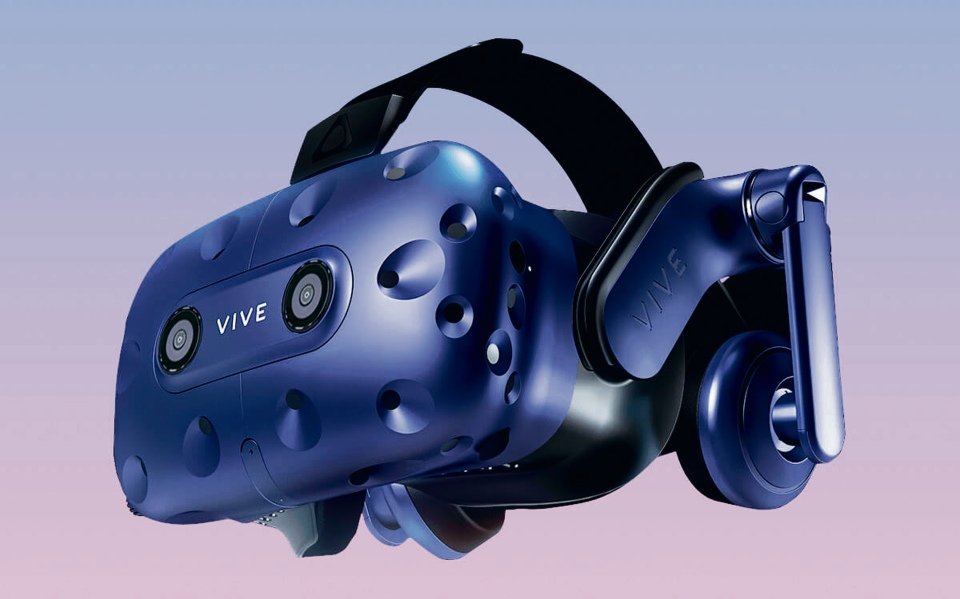From smart nappies to dog toilets, here’s the latest (and weirdest) tech from CES 2019
January is a month for reflecting on the past, typically while nursing a war torn liver and a perilously diminished bank balance.
But it’s also the time of year for looking forwards, and at the annual CES trade show in Las Vegas, the world’s biggest tech companies convene to reveal their upcoming gadgets and bizarre concepts.
From smart fridges and flying cars to bluetooth nappies and laundry folding robots, here is all the useless garbage that will no doubt characterise the landfills of the future.
Televisions
The unstoppable onwards march of technology is most apparent in the sheer number of Ks that televisions now boast. 4K screens are increasingly old news – only a philistine would be caught dead with their eyes pointed at one – usurped by a dazzling range of new 8K displays. That’s such a high density of pixels you’d need a magnifying glass to tell two apart.
 LG's rollable television, which can be semi-unfurled to run in "Line Mode", displaying photos or music controls
LG's rollable television, which can be semi-unfurled to run in "Line Mode", displaying photos or music controls
Samsung’s 98-inch whopper of a gogglebox stole the show, but more interesting is the advent of flexible screens. The 65-inch LG Signature OLED TV R unfurls from a box like a big sheet of tinfoil, and once deployed looks like a regular TV screen. The box also acts as a soundbar, and the company claims that the screen’s rollability has no detrimental effect on picture quality.
Robots
Technology inches ever closer to the day robots will finally rise up and tear us all limb from limb. Until then, we can enjoy the likes of the adorable Lovot robot from Groove X (above). It has a camera mounted to its head and eyes that can detect heat. At two feet tall it resembles a fuzzy puffin and is cursed with an insatiable imperative to be picked up and stroked.
 Ubtech's fleet of robots are now equipped with arms, which were somehow overlooked in the previous models
Ubtech's fleet of robots are now equipped with arms, which were somehow overlooked in the previous models
More useful is the improved Ubtech Walker (pictured left), the taller of which now boasts a pair of articulated arms, all the better to throttle you in your sleep with. It can patrol your home, climb stairs and even play football with the kids. Just mind it doesn’t fall over on top of them.
Cars
First revealed in 2014, the LiveWire is Harley-Davidson’s first attempt at a fully electric motorcycle. At CES the company announced it would begin taking pre-orders, with the first bikes shipping in August priced at $29,799. The battery-bike is no slouch either, and can do 0-60mph in 3.5 seconds.
Hyundai’s Elevate concept takes the drastic step of bolting a set of robotic legs to a car, allowing first responders to reach survivors in disaster situations by crawling over debris, all while looking like an AT-AT from Star Wars.
 Hyundai's Elevate concept car, on its way to destroy the Rebel Alliance
Hyundai's Elevate concept car, on its way to destroy the Rebel Alliance
Meanwhile Laborghini, presumably having run out of new ideas for cars, was showcasing a $30,000 massage chair, with fingerprint locking and built-in 5.1 surround sound.
Bathroom
Sure, some fancier commodes have those little wands that emerge from under the rim to hose you down, but besides that innovation toilet tech has plateaued. This year’s CES, however, was flush with smart toilets.
Kohler’s toilet wants to shake things up by offering a “fully immersive” experience (as if anyone would want to be fully immersed in a toilet). The high-tech john has built-in speakers, the Amazon Alexa virtual assistant (in case you have any questions) and adaptive mood lighting, for angry pooping or meditative peeing.
 The Inubox self-cleaning toilet for dogs collects waste until it's full up, then dispenses it in a neat sealed package. That's the plan anyway…
The Inubox self-cleaning toilet for dogs collects waste until it's full up, then dispenses it in a neat sealed package. That's the plan anyway…
Toothbrushes have also had an upgrade. The Y-Brush looks like a mouthguard and promises a ten second deep clean for your teeth. Just bite down and let the motorised bristles go to town on your mucky molars.
And then there’s the Inubox dog toilet, which can detect your pooch’s business, before snapping shut like a giant sandwich toaster and cleaning itself up. Delightful.
Gaming
Not one for understatement, ASUS announced its new hyper-powered gaming laptop, humbly named the Mothership. It’s a tablet-style 2-in-1 with a fold-out kickstand and a detachable keyboard. It’s so stupidly powerful that it even has a second AC port, dedicated to powering its Nvidia RTX GPU.
 The HTC Vive Pro Eye with eye-tracking capabilities, which can be used to train fighter pilots as well as practice public speaking
The HTC Vive Pro Eye with eye-tracking capabilities, which can be used to train fighter pilots as well as practice public speaking
HTC Vive, the virtual reality headset, revealed an upgraded version of the device that can handle real-time eye-tracking. It means the headset can focus its processing power on rendering precisely what you’re looking at in VR, and drawing your peripheral vision with less detail, emulating how our eyes work in the real world. The tech is currently being used to train fighter pilots at Lockheed Martin.
 The Matrix Powerwatch 2 is a smartwatch powered entirely by the wearer's body heat
The Matrix Powerwatch 2 is a smartwatch powered entirely by the wearer's body heat
Wearables
The Urgonight headband makes the bold claim of being able to help control your brainwave patterns to aid you in falling asleep more quickly. Bizarrely, it’s worn during the day.
And CES also gave us the world’s first wearable for babies. Parents can take all the guesswork out of changing nappies with the Monit diaper monitor, a bluetooth sensor that slips into a nappy and sends you a notification whenever your kid pees or poops. Presumably created by somebody without a sense of smell.